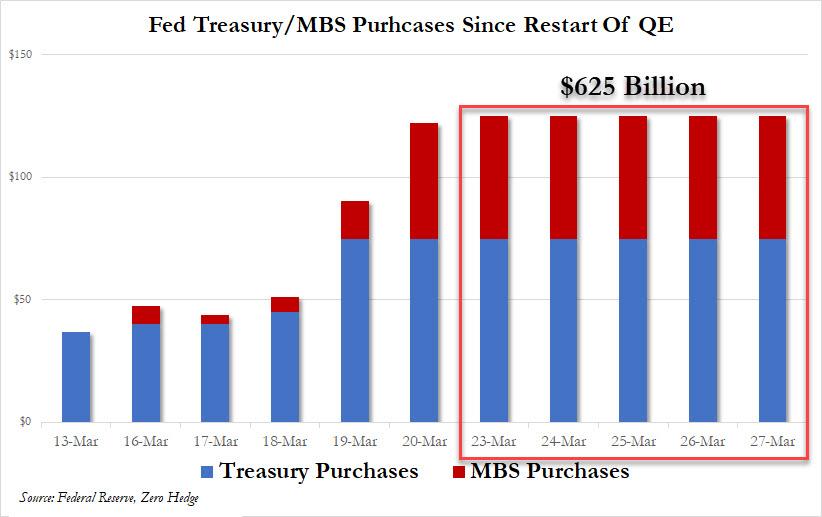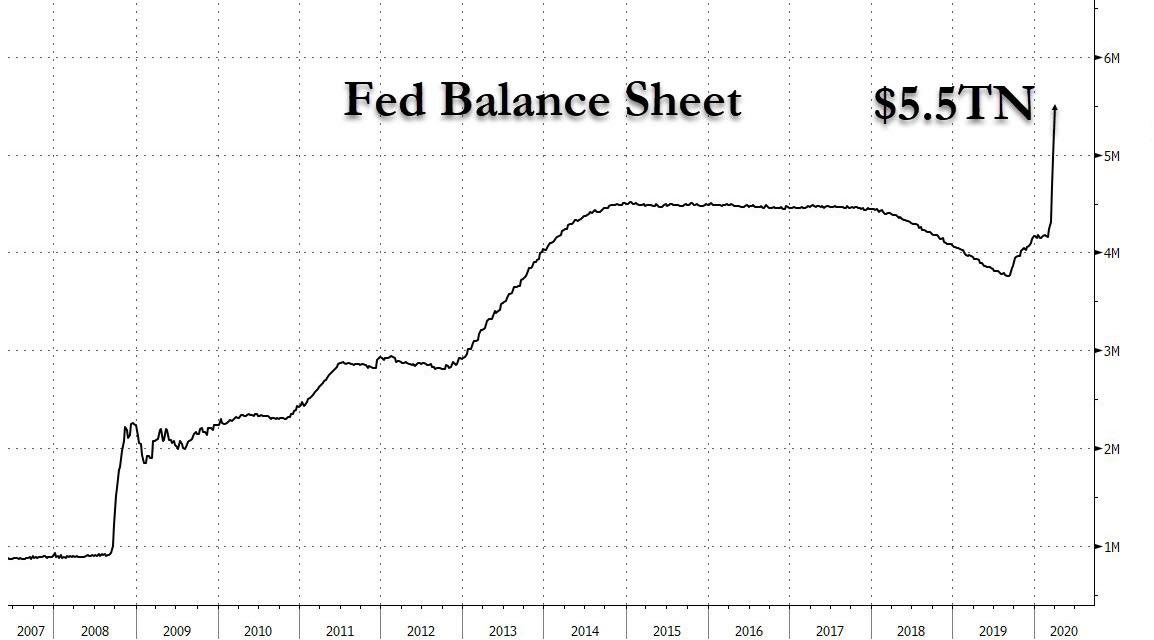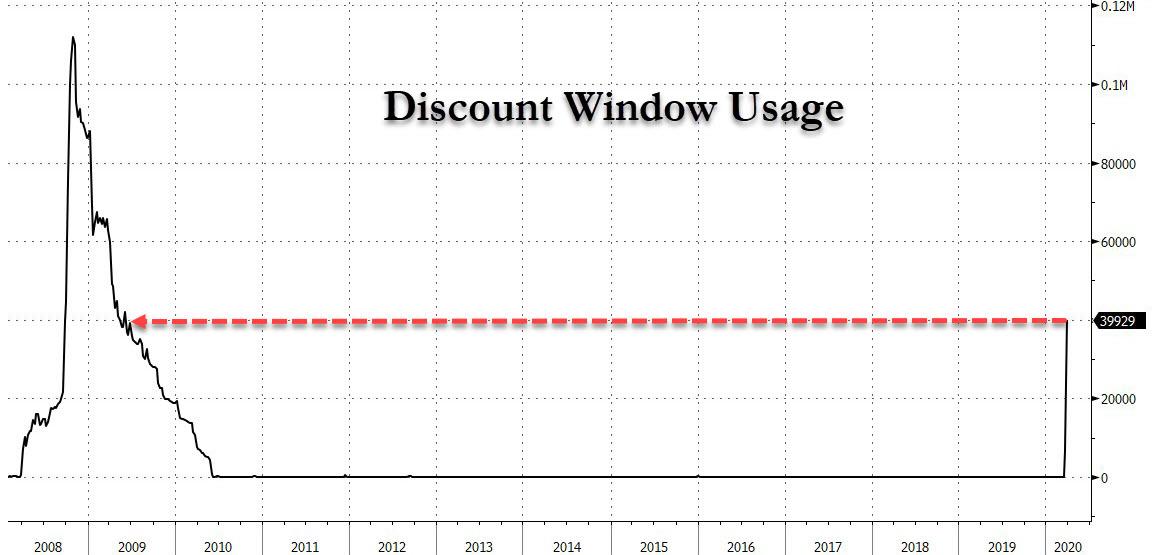Fed Balance Sheet Hits $5.5 Trillion As Discount Window Usage Soars
As previewed last night when we showed that in the past week the Fed has bought a staggering $587BN in Treasuries and MBS, we calculated that as of March 25, the Fed’s balance sheet would rise to a record $5.3 trillion, a phenomenal increase of $1.2 trillion in just the past two weeks, equivalent to roughly 5.6% of US GDP.
Today, the release of the latest weekly H.4.1 statement from the Fed confirmed our math, and that as of close on Wednesday, March 25, the Fed’s total asset were indeed $5.3 trillion. Which, sadly, is now a stale number because we now live in a world where the Fed buys a record $125 billion in bonds (and who knows what else either directly or via Blackrock) every single day, which means that as of the Friday’s close, the Fed will have added a record $625 billion to its balance sheet…
… and more specifically, $250 billion to the total as of March 25. In other words, in just a few short hours, the Fed’s balance sheet will be $5.5 trillion…
… an increase of $1.3 trillion in two weeks (6% of GDP), which was the amount the Fed monetized during all of QE1 in response to the financial crisis, but which took place over a period of almost 2 years.
And as an aside, the Fed’s push to get banks to use the discount window appears to have worked: after more than a decade of stigma associated with any bank caught within 100 feet of the Primary Credit Facility, also known as the Discount Window, and with zero usage since mid-2010, last week borrowings under the Discount Window surge to $40 billion.
And while the Fed’s attempts to legitimize and de-stigmatize Discount Window usage are noble, we doubt it will be public just which bank(s) had to resort to this “Plan Z” source of funding.
Tyler Durden
Thu, 03/26/2020 – 20:58


